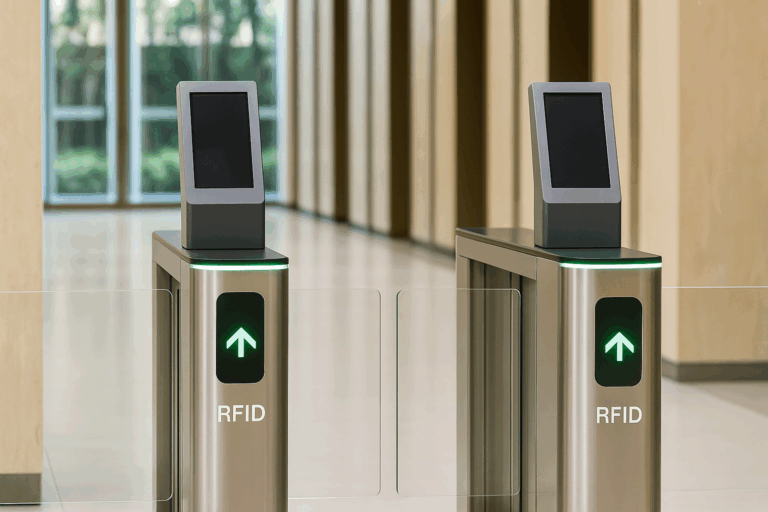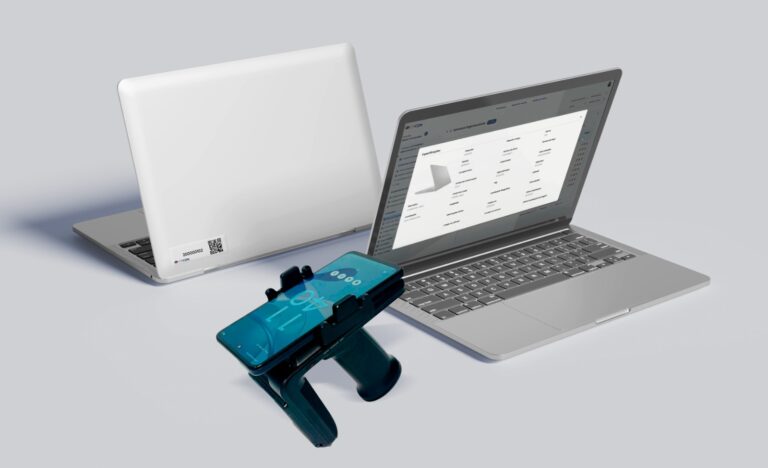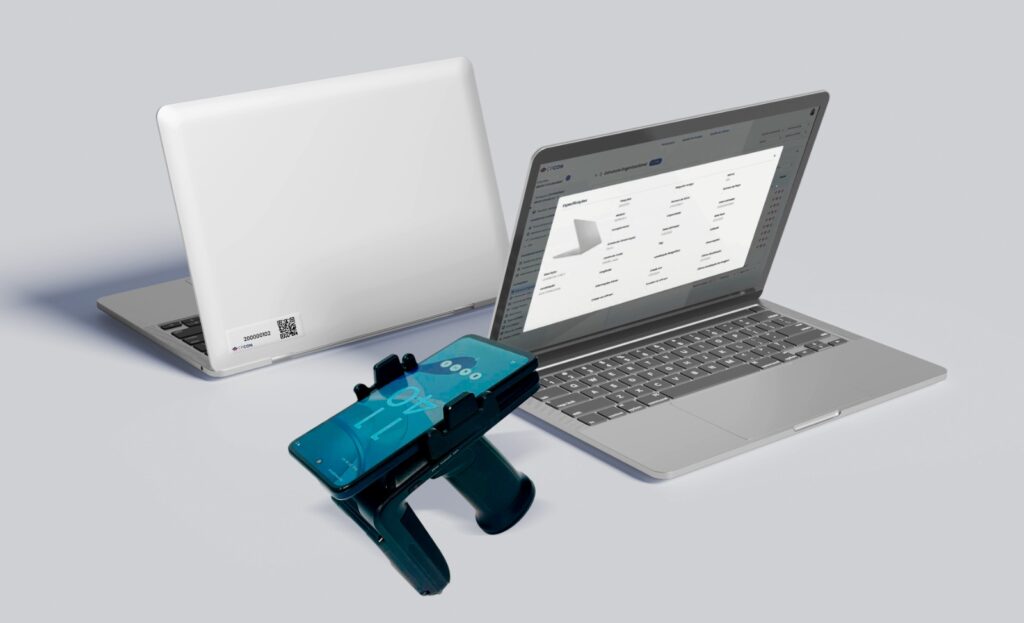What is asset management and why is it so important for modern businesses?
Asset management is the process of tracking, organizing, and optimizing the use of physical and digital assets across a company’s lifecycle. From machines and real estate to software licenses and data, everything your organization owns has value—and managing these resources with precision is key to growth, compliance, and long-term sustainability.
Whether you’re leading a retail chain, utility company, or industrial plant, effective asset management empowers you to reduce losses, make smarter decisions, and scale operations with confidence.
In this guide, you will learn:
- What asset management really means — beyond basic inventory control
- How to implement asset management in practice, step by step
- Which technologies are transforming asset control (like RFID and AI)
- Why global companies are prioritizing visibility, compliance, and efficiency
- How asset management drives better decisions and sustainable growth

Table of Contents
ToggleWhat Is Asset Management?
Asset management is a structured approach to monitoring, maintaining, and optimizing everything a company owns. These assets can be physical—such as buildings, machinery, and IT equipment—or intangible, like software, intellectual property, and digital infrastructure. In financial sectors, the term also refers to the management of investments and portfolios, but in the corporate context, it encompasses the full lifecycle of tangible and intangible assets used to operate a business.
At its core, asset management aims to answer a few critical questions:
- What assets does the company own?
- Where are they located?
- What is their current condition, value, and usage?
- Are they delivering the expected return or performance?
- When should they be repaired, replaced, or retired?
Companies that operate without a proper asset management strategy often face challenges like information gaps, inaccurate inventories, duplicated purchases, compliance failures, and financial losses. That’s why asset management has evolved from a back-office operation to a strategic pillar of modern business.
Key purposes of asset management:
- Extend the useful life of assets through preventive maintenance
- Avoid operational downtime by tracking asset conditions in real time
- Improve budget planning and capital allocation with reliable data
- Ensure compliance with regulatory frameworks such as IFRS, SOX, and ESG standards
- Support audits with traceable, documented records
According to a recent article by Brazil Journal, wealth and asset management have become top priorities for financial institutions seeking long-term value creation in a volatile economic environment. This shift also reflects a broader movement in other industries, where operational assets—not just financial ones—are now seen as strategic levers for transformation and risk mitigation.
The concept of asset management also plays a growing role in sectors like energy, where integrated systems are used to reduce inefficiencies and support decision-making across distributed operations. In utilities, for example, real-time asset visibility has become essential for maintenance, safety, and regulatory reporting.
As new technologies like RFID, IoT, and AI reshape how companies track and analyze their resources, the definition of asset management continues to expand—becoming not only a question of “what you own,” but “how well you use it.”
Why Asset Management Is Essential for Modern Organizations
In today’s fast-paced business environment, companies are under increasing pressure to operate with precision, efficiency, and transparency. Asset management has become a foundational discipline for achieving these goals—especially in organizations with complex operations, multiple locations, or high-value equipment.
When assets are not properly tracked or managed, the consequences can be serious:
- Loss of operational control
- Unexpected downtime
- Missed compliance deadlines
- Inaccurate financial reporting
- Wasted capital on redundant or unused assets
This reality is pushing companies across sectors to rethink their approach. From logistics networks to energy grids, asset visibility is no longer optional—it’s a competitive advantage.
Common pain points solved by asset management:
- Lack of inventory accuracy and real-time tracking
- Inability to locate or account for critical assets
- High costs of maintenance due to reactive strategies
- Compliance risks from missing or outdated documentation
- Difficulty in auditing and proving asset ownership or usage
A study published by Bloomberg Línea shows that asset management is becoming a core focus for financial and industrial institutions alike. With automation, digital governance, and personalized data models on the rise, companies are investing in technology to gain full control over their assets—and reduce exposure to risk.
Meanwhile, in sectors like public infrastructure and utilities, integrated asset management is helping organizations balance cost, performance, and sustainability. According to Brasil Energia, concessionaires are adopting advanced models to centralize data, extend asset life, and meet new regulatory requirements.
The bottom line: without structured asset management, even the best business strategy can be undermined by operational inefficiencies. That’s why modern companies—regardless of size or industry—are building robust systems to manage their physical and digital infrastructure with discipline and intelligence.
The Core Components of an Asset Management System
Effective asset management requires more than just keeping a record of what a company owns. It involves a systemized framework capable of controlling the full asset lifecycle—from acquisition to disposal—with transparency, accuracy, and scalability.
Whether implemented through an ERP integration or a specialized asset control platform, the system should centralize information and ensure consistent decision-making across departments and locations.
Key components include:
1. Asset identification and classification
Every asset must be uniquely tagged and categorized by type, location, function, and value. This allows organizations to understand what they own and how each item contributes to operations. Tools like RFID tags enable automation and traceability, even across large inventories.
2. Lifecycle management
From procurement and installation to maintenance, depreciation, and retirement, each asset goes through predictable stages. A solid system monitors these stages to trigger alerts, optimize use, and prevent unnecessary replacements.
3. Integration with ERP and financial systems
For maximum efficiency, the asset management platform should integrate with enterprise systems such as ERPs, financial controls, and procurement workflows. This allows for consistent data flow, automated depreciation calculations, and audit-ready documentation across the organization.
4. Maintenance planning and execution
Preventive and predictive maintenance are essential for keeping assets operational and avoiding downtime. The system should schedule tasks, track work orders, and log historical interventions for each asset.
5. Compliance and audit traceability
Regulations such as IFRS, SOX, and local tax laws require accurate reporting on fixed assets. A structured system ensures full traceability, enabling companies to present clean audits and reduce compliance risks.
6. Role-based access and governance
To maintain data integrity, organizations must control who can view, edit, or approve asset information. Clear governance rules reduce the risk of errors, fraud, or data duplication.
7. Real-time visibility and reporting
Dashboards and analytics give managers a comprehensive view of asset performance, helping identify inefficiencies, overutilization, or underused resources.

Asset Management in Practice: Technologies, Tools, and Trends
The way companies manage their assets has changed dramatically in the past decade. Manual spreadsheets and disconnected systems are being replaced by intelligent platforms that combine automation, real-time tracking, and predictive analytics.
These innovations are not just about modernization—they are key to operational resilience and long-term value creation. Companies that adopt smart asset management tools reduce losses, improve decision speed, and gain a level of control that would be impossible with traditional methods.
Technologies shaping modern asset management:
RFID (Radio-Frequency Identification)
RFID technology allows companies to track physical assets automatically—without manual input. Fixed portals and handheld readers capture movements in real time, enabling full visibility across warehouses, stores, hospitals, or industrial plants.
IoT (Internet of Things)
Smart sensors installed on machines, equipment, and infrastructure feed real-time data into asset platforms. This enables predictive maintenance, automated alerts, and better performance tracking.
AI and data intelligence
As pointed out in this article from Bloomberg Línea, companies are increasingly using AI to optimize asset portfolios and identify risks before they escalate. In fixed asset management, AI helps prioritize replacements, optimize resource use, and forecast lifecycle costs.
Cloud-based platforms
Cloud solutions enable centralized control across multiple facilities or countries. They support real-time collaboration between teams, automated updates, and secure data storage—without relying on legacy infrastructure.
ESG and audit-driven tools
With sustainability and transparency becoming global priorities, asset systems must support environmental, social, and governance (ESG) reporting. According to TI Inside, the integration of ESG metrics into asset management is becoming a regulatory and reputational requirement—especially in sectors like energy, finance, and public services.
These technologies are not isolated tools—they work together to create a responsive, intelligent ecosystem. With the right strategy, asset management evolves from a reactive task into a proactive engine of performance, compliance, and innovation.
Best Practices for a Scalable Asset Management Policy
A strong asset management policy is the backbone of any effective asset control strategy. It defines how a company acquires, classifies, tracks, depreciates, and disposes of its assets. But beyond documentation, a good policy sets the tone for operational discipline and regulatory alignment—especially in organizations planning to grow.
Without a clear framework, it’s easy for inconsistencies to emerge: conflicting asset values, undocumented transfers, misaligned depreciation schedules, or compliance gaps. These issues become harder to manage as the company expands.
A scalable policy ensures that growth doesn’t come at the cost of control.
Key practices for building a solid asset management policy:
1. Define capitalization thresholds
Establish minimum values for recognizing an item as a fixed asset. This avoids clutter in the asset register and ensures resources are tracked with the right level of attention.
2. Standardize asset classification
Use consistent categories and codes across departments. This helps avoid duplicate entries and allows for better reporting, maintenance scheduling, and financial forecasting.
3. Assign roles and responsibilities
Determine who is responsible for asset registration, maintenance, reconciliation, and audits. Clear ownership improves accountability and reduces the risk of data gaps.
4. Align with accounting and audit standards
Ensure that your policy complies with local and international standards like IFRS, GAAP, and SOX. Consistency between asset records and financial reports is essential for clean audits.
5. Plan for the full lifecycle
Your policy should guide not only the acquisition and use of assets, but also their maintenance, impairment testing, transfers, and eventual disposal. Include timelines, documentation requirements, and approval workflows.
6. Integrate with your ERP and operational systems
A policy disconnected from your operational tools will create friction. Make sure your policy reflects the actual systems and technologies used across the organization—including RFID platforms and real-time monitoring tools.
7. Audit and update regularly
Treat the policy as a living document. As your company adopts new tools or enters new markets, update the policy to reflect changes in scope, regulations, and internal processes.
Industries That Benefit Most from Strong Asset Management
While asset management is relevant to virtually every organization, some industries experience a greater impact due to the complexity, scale, or critical nature of their assets. For these sectors, failing to implement a robust asset control strategy can lead to operational downtime, financial loss, or compliance risk.
On the other hand, companies that embrace strategic asset management gain a clear competitive advantage—reducing waste, extending asset life, and unlocking better decision-making.
1. Energy and Utilities
Power plants, transmission networks, and water systems depend on large-scale infrastructure with long lifecycles. Asset management ensures real-time visibility, optimized maintenance, and regulatory compliance.
As Brasil Energia reported, integrated asset strategies are now essential for concessionaires operating under strict performance and ESG requirements.
2. Retail and Logistics
From shelves and storage units to POS systems and warehouses, retail operations rely on accurate asset tracking to meet demand. RFID technology has become a game-changer, allowing retailers to automate inventories and minimize losses—especially during seasonal peaks or store expansions.
3. Manufacturing and Industry
Factories manage thousands of high-value assets daily—from production lines to safety equipment. Asset management helps reduce machine downtime, control spare parts, and maintain compliance with safety and environmental regulations.
4. Finance and Insurance
While intangible assets dominate in financial institutions, fixed assets still play a vital role in risk and compliance frameworks. Proper classification and lifecycle tracking ensure transparency in audits, align with IFRS and ESG expectations, and support accurate reporting.
5. Public Sector and Infrastructure
Governments and public entities face scrutiny over asset use, budgeting, and maintenance. A centralized system enables traceability, supports planning, and meets audit demands—particularly when managing schools, hospitals, roads, or cultural institutions.
No matter the industry, the principle remains the same: better asset management leads to better decisions. And in sectors where margins are tight or regulations are strict, visibility and control are not a luxury—they’re a necessity.

Asset Management and Compliance: IFRS, GAAP, and Audits
In a highly regulated business environment, asset management is not just an operational concern—it’s a compliance requirement. Organizations must maintain accurate records of their assets to satisfy international accounting standards, pass audits, and avoid financial or legal exposure.
Whether your company follows IFRS, GAAP, or local regulatory frameworks, the ability to trace and justify asset values is fundamental to good governance.
Why compliance matters in asset management:
1. Financial accuracy and transparency
Fixed assets often represent a significant portion of a company’s balance sheet. Errors in depreciation, impairment, or classification can directly impact financial statements, investor trust, and tax obligations.
2. Readiness for external audits
Auditors require evidence of ownership, condition, valuation methods, and changes over time. An organized asset system provides this documentation instantly—eliminating the need for manual reconciliation and reducing audit time and cost.
3. Alignment with IFRS and GAAP standards
Standards like IFRS 13 (Fair Value), IAS 36 (Impairment), and IAS 16 (Property, Plant and Equipment) require consistency in how assets are measured and reported. A strong asset system ensures alignment with these rules across entities and regions.
4. Risk mitigation and internal controls
Uncontrolled assets create risk—especially during M&As, audits, or capital restructuring. With a reliable asset register, companies can prevent fraud, manage write-offs, and stay ahead of compliance deadlines.
5. ESG and regulatory disclosures
As ESG becomes central to stakeholder reporting, companies must track not just financial value but also environmental impact. According to TI Inside, regulators are starting to require integrated reporting that includes asset performance, resource usage, and lifecycle data.
At CPCON, we work with companies to ensure that their asset records are not only complete and accurate—but also aligned with the latest regulatory and audit standards. Our methodology ensures audit traceability, standardized processes, and data you can trust when it matters most.
Strategic Impact: From Cost Savings to Competitive Advantage
Asset management is often seen as a back-office function, focused on compliance or operational control. But in practice, it can be a powerful strategic lever—driving cost efficiency, unlocking better capital allocation, and supporting long-term growth.
Organizations with mature asset management systems not only save money. They gain visibility into patterns, make faster decisions, and are better prepared for change.
Strategic benefits of strong asset management:
1. Cost reduction and resource optimization
By eliminating ghost assets, reducing duplicate purchases, and scheduling preventive maintenance, companies reduce waste and control expenses—especially across distributed operations.
2. Better financial planning
With accurate asset data, CFOs can align depreciation, impairment testing, and capital investments. This improves budgeting accuracy and supports long-term financial health.
3. Data-driven decision-making
A centralized system creates a single source of truth across departments. Leaders can analyze asset performance, identify inefficiencies, and make decisions based on real usage, not assumptions.
4. Business continuity and scalability
In fast-changing environments, knowing where your assets are—and how they perform—is key to scaling operations without losing control. This is especially relevant in retail, healthcare, and logistics.
5. Support for innovation and transformation
Digital transformation depends on reliable infrastructure. Asset management provides the foundation for integrating IoT, automation, AI, and ESG frameworks. It also supports change management during mergers, acquisitions, or restructuring.
In many organizations, asset data becomes the bridge between operational teams and the executive board. With the right tools and governance, asset management moves from a reactive task to a strategic enabler—fueling performance, resilience, and innovation.
How CPCON Helps Global Companies Master Asset Management
With over 25 years of experience, CPCON supports organizations in building intelligent, scalable asset management systems. We combine advanced technology with deep expertise to ensure full control over physical, digital, and financial assets.
Our core solutions include:
- RFID and IoT implementation for real-time tracking
- Fixed asset inventory and valuation services
- ERP integration and data standardization
- Customized asset policies and audit-ready documentation
- Regulatory alignment with IFRS, GAAP, and ESG standards
- Specialized consulting for high-volume, multi-site operations
From retail and industry to finance and infrastructure, CPCON helps businesses take control, reduce risk, and operate with confidence—anywhere in the world.
Talk to our experts and discover how CPCON can help your company.
Asset Management as a Strategic Priority
Asset management is no longer just an administrative task—it’s a strategic foundation for efficiency, compliance, and growth. Whether you’re managing retail stores, energy grids, or financial portfolios, having full control over your assets means making smarter decisions, reducing risks, and preparing for the future.
As technology and regulation evolve, so must your asset strategy. Companies that invest in structured, intelligent asset management gain a competitive edge—turning visibility into value.
CPCON supports organizations around the world in building scalable, compliant, and future-ready asset management systems. With the right tools and expertise, everything can be under control.
FAQ
What is asset management and why is it important?
Asset management is the process of tracking, organizing, and optimizing a company’s physical and digital assets. It helps reduce losses, ensure compliance, improve decision-making, and support business scalability.
How does asset management support regulatory compliance?
Proper asset management ensures that companies follow IFRS, GAAP, ESG, and other standards by maintaining accurate records, supporting audit traceability, and aligning financial reports with asset data.
What technologies are used in asset management systems?
Modern systems use RFID for real-time tracking, IoT sensors for condition monitoring, cloud platforms for centralized control, and AI for predictive analysis and performance insights.
What are the best practices for implementing asset management?
Key practices include defining capitalization thresholds, standardizing classifications, integrating with ERP systems, assigning clear roles, and updating policies regularly to ensure control and compliance.
Get to Know CPCON Group: A global expert in asset management and inventory solutions
CPCON Group is a global leader in asset management, fixed asset control, and RFID technology. With over 25 years of experience, we have supported major companies such as Nestlé, Pfizer, Scania, BASF, Coca-Cola Andina, Vale, Vivo, Petrobras, and Caixa in high-complexity projects.
Curious about our global footprint? We are present in:
- North America: Toronto, New York, Miami, Minneapolis, Seattle, Dallas
- Latin America: São Paulo, Buenos Aires, Lima, Bogotá, Mexico City
- Europe: Lisbon, Porto, London, Birmingham, Milan, Rome, Turin, Madrid, Bilbao
- Middle East: Dubai, Saudi Arabi
- Caribbean: Tortola, Grand Cayman
Follow our LinkedIn Showcase Page and stay updated with strategic content on asset control, inventory management, and RFID innovation across industries.
This pillar article explores the concept of asset management from a strategic and operational perspective. It defines what asset management is, explains its importance across industries, and presents the key components of an effective system. The content covers technologies such as RFID, IoT, and AI, as well as best practices for building scalable and compliant asset management policies. It also highlights the role of asset management in regulatory frameworks like IFRS and ESG, and how it supports financial planning, audits, and business growth. Finally, the article positions CPCON as a global leader in asset control, offering advanced solutions and consulting services to help companies manage their assets with precision and intelligence.






















